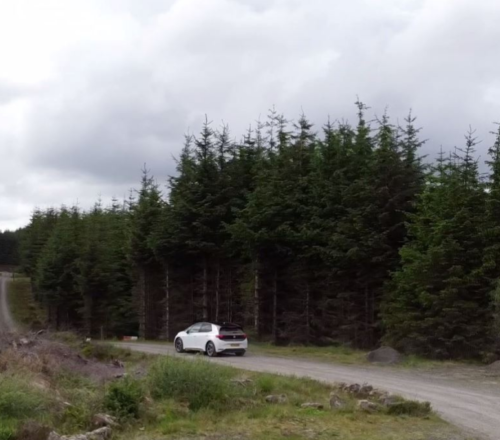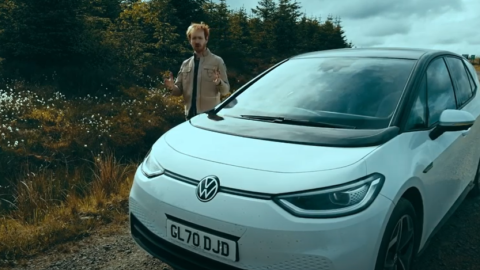There’s nothing quite as captivating as an amazing view that goes on for miles. It really does make you feel on top of the world. We’re lucky that here in...
Dan took a trip to Kielder Observatory to star gaze in one of the largest Dark Sky parks in the world, and teach you how to make the most of Britain’s night skies.
Hello, I’m Dan Pye, Director of Astronomy at Kielder Observatory. The UK has some of the best places in the world to go to see the stars at night. So, I went to Kielder Water Forest Park in Northumberland which sits in the largest gold-tier Dark Sky Park in Europe. That means it’s free from light pollution produced by towns and cities. Getting away to Dark Sky Parks means there’s less light bouncing around the atmosphere above your head, and you can see through it clearer.
I could see thousands of stars with my naked eye, and in Autumn the Milky Way is prominent above your head. You can see some amazing things all over the country, you just need to get out there and see it and visit an area of dark sky close to you. To find your closest dark sky, visit www.darksky.org
My top tips for getting out stargazing is first to figure out which direction is North. You can do this by using a famous collection of stars known as the Plough. By using the two end stars on the right of this collection of stars, you can draw a line which extends out of the top. Following that line, you will get to a star of similar brightness to the two pointers, that’s the North Star. Now you know you’re looking North.
Turning 180 degrees means you’re going to be looking at the Southern skies, which is an area of sky which changes as the seasons progress. This is because we are looking towards the plane of our Solar System. In this patch of sky, you will find the constellations of the zodiac, which help us find the planets. You can also notice how they change position across the year as we travel around our solar system. What’s in our night-time skies in the South tonight, is going to be our daytime sky in 6 months' time when we are on the opposite side of the Sun.
If you want to pick out interesting objects to look at, I’d recommend a pair of 10x50 binoculars. This will help you get a little more light into your eyes, allowing you to resolve things you wouldn’t otherwise have been able to without them. You can use these to look at the moon, pick out clusters of stars, or even look at objects such as the Andromeda Galaxy or Orion Nebula.
To maximise your ability to see more, you should avoid any source of bright light for at least 20 minutes before you star gaze, this includes your mobile phone (unless you have a red filter). This allows the chemicals in your eye to activate your night vision and allows you to see more. Using red lights to get around the place will help you find your way and not stumble over anything.
For locating objects, I would recommend an app called Stellarium. It’s an excellent sky map which you can point towards objects and identify or find them. It also helps you identify what you’re looking at and tells you a little more about it.
Viewing the skies from the UK, I would recommend going for objects such as the planets, the Moon, the Orion Nebula, the Andromeda Galaxy, the Double Cluster, M36 & M37, the Dragonfly Cluster, Iota Cancri and the Garnet Star (Erakis).
Ponder this while you do. Each thing you look at in the night sky is a little point in time different to our own. The light we’re receiving with our eyes has travelled the vast vacuum of space between us and it for many years in most cases. Light years is the distance the light has travelled relative to the passage of a year on Earth, that means when you look at something 10 light years away, that’s how it looked 10 years ago, you’re looking back in time. Each object you’re seeing in the sky is a different point in existence, some of which may no longer be there, some of which have changed position potentially, it’s the universe’s greatest time machine, shrouded in mystery.
Do you need a vehicle for business?
Choose from the award-winning Volkswagen, ŠKODA, SEAT, and Volkswagen Commercial Vehicle range for either short-term daily rental (1-28 days) or long-term rental (28+ days). Plus, the vehicle you book, is the vehicle you get. Unless you are on your own company fleet insurance, the minimum age for business rental is 25 and you must have held your licence for a minimum of 12 months.
Complete the contact form and let us know your requirements. Then we can get you set up and on the road.




